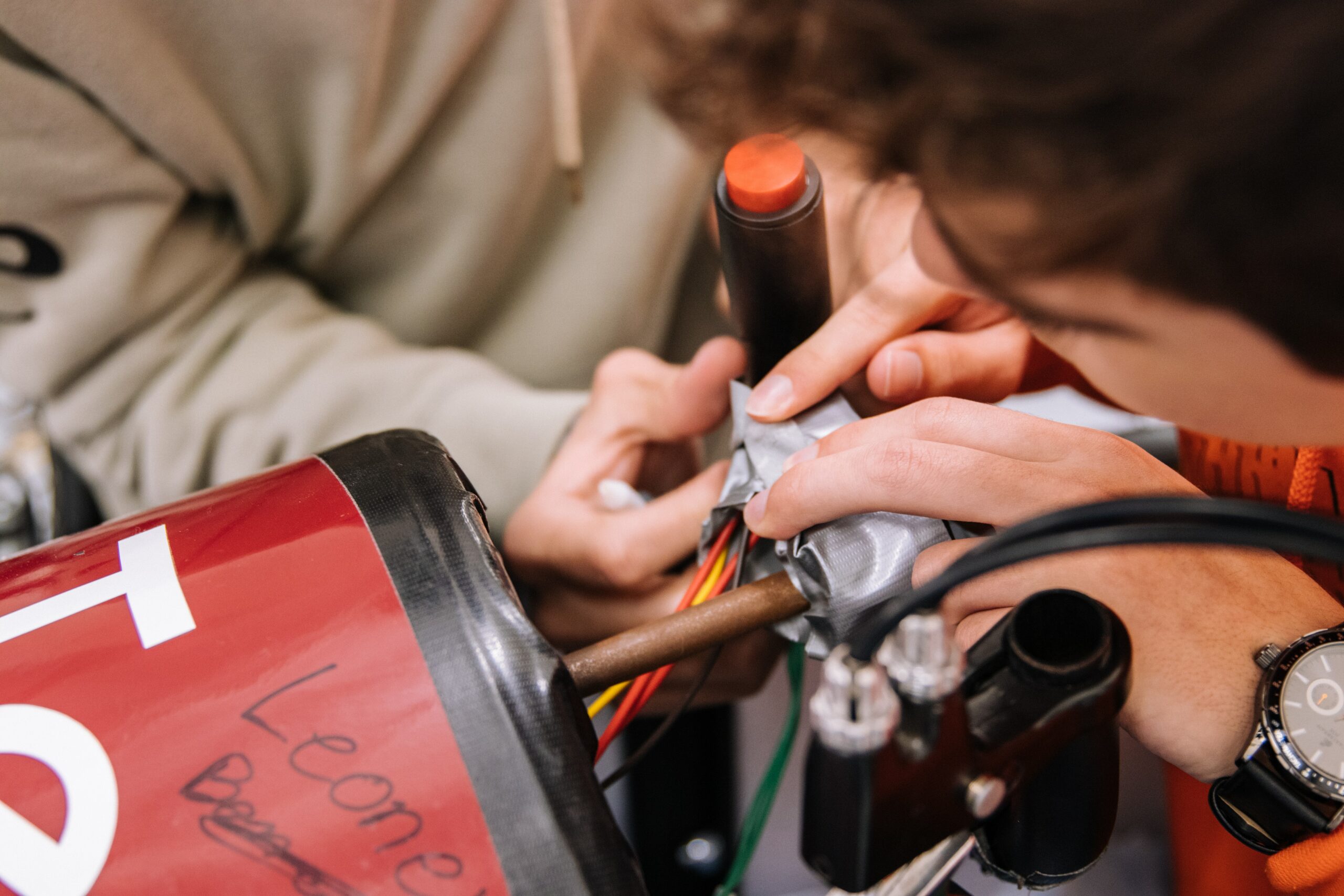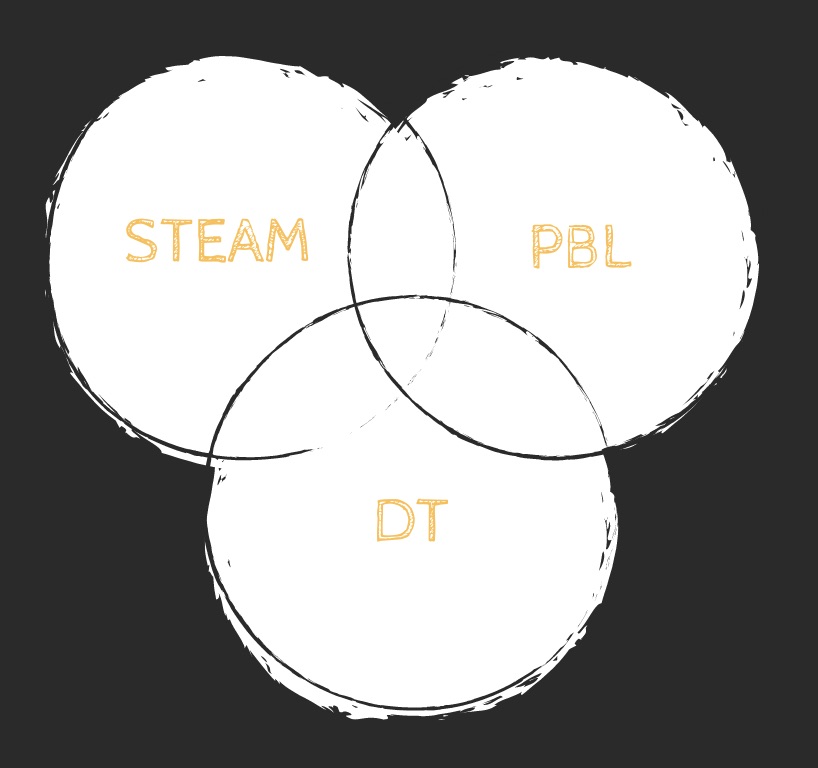STEAM vs PBL vs DT
I’ve noticed in my teacher training these acronym’s are often peppered into conversation and usually used interchangeably. Being an artist these types of hands-on, inquiry based teaching approaches have really caught my eye. This post is here to explain the differences and commonalities between the three and the best way to use them depending on your personal personal teaching style and your comfortability with inquiry.
↠———————So here we go———————↞
1. S.T.E.A.M

“STEAM is an educational approach to learning that uses Science, Technology, Engineering, the Arts and Mathematics as access points for guiding student inquiry, dialogue, and critical thinking. The end results are students who take thoughtful risks, engage in experiential learning and persist in problem-solving.”
-from Education Closet
STEAM has evolved from STEM as a positive mode of action to truly meet the needs of the 21st century world by incorporating the A for art. STEM alone misses several key components that many parents, educators and employers have voiced as critical for our children to thrive in the present and rapidly approaching future. STEAM allows students to connect their learning in critical content areas together with arts practices, elements, design principles and competencies. This combination encourages wonder, critique, inquiry, and innovation.
Although STEAM supports a transdisciplinary approach to teaching and learning, instructors may be unclear how to implement this tool into their classroom. Arts instructors may be uncertain about how to incorporate STEM into the arts and similarly, a math teacher may lack a lens to understand where or how to put the ‘a’ into STEM. We need a broader and more inclusive view of STEAM that spans disciplines, with entry point across all contexts.
↠———————————————————↞
2. Project-Based Learning (P.B.L)

“The core idea of project-based learning is that real-world problems capture students’ interest and provoke serious thinking as the students acquire and apply new knowledge in a problem-solving context. Advocates assert that project-based learning helps prepare students for the thinking and collaboration skills required in the workplace.”
Project-Based Learning is a great method in which students gain knowledge and skills by working on a project for an extended period of time to investigate and respond to an authentic, engaging, and complex question, problem or challenge. However, PBL can be limiting if it is approached in a teacher-centered way. Typically, a teacher initiates PBL with an ‘essential question’ which students then inquire into and research. The final project is usually already decided and because of that, the research becomes quite narrow. PBL also has a heavy emphasis on the final product rather than focusing on the learning journey from beginning to end.
Differing from Jane David’s definition of PBL, Ewan McIntosh from Edu Blogs suggests that a downfall of PBL is that the language and vocabulary involved with this educational tool was invented by educators for educators and extends very little into the type of language students will be using in their future careers.
↠———————————————————↞
3. Design Thinking (D.T.)

“Design thinking is a non-linear, iterative process that teams use to understand users, challenge assumptions, redefine problems and create innovative solutions to prototype and test. Involving five phases—Empathize, Define, Ideate, Prototype and Test—it is most useful to tackle problems that are ill-defined or unknown.”
from Interaction Design
Design Thinking (DT) is a way for students to inquire into topics they are curious about and explore the widest possible area(s) for longer to identify the line(s) of inquiry they might explore. DT is inherently student-centred and is usually kick-started by a provocation which is introducing provocative content or a provocative activity to launch the project. Students will naturally create and answer their own essential questions as they deep-dive into research. Students then make the choice about what their prototype involves (PBL and possibly STEAM) and how they will execute it.
Interestingly enough DT was first created back in 1958 by product designers who put pen to paper to describe what made a good design. Because DT was created within the work-force it already houses the necessary vocabulary that students will need in their future professions.
↠———————————————————↞
SO what does this mean for educators?
In my eyes we need a broader more inclusive view of STEAM and PBL that spans disciplines and I believe that design thinking is that framework. To apply STEAM, educators need support and structures for enacting messy creative practices within the already messy and challenging contexts of teaching. Design Thinking can be used to address the struggle of creating curricula that is engaging, creative, project-based, and inter-disciplinary in nature-or, STEAM based curricula. The Design Thinking framework provides a natural bridge for all STEAM subjects and teachers can use this framework to more easily integrate STEAM-based lessons.
↠———————————————————↞
Featured Image by Tesla Mayenburg
Image 1: NeONBRAND on Unsplashed
Image 2: Sigmund on Unsplashed
Image 3: Jeswin Thomas on Unsplashed





jchris
February 13, 2021 — 1:11 pm
Hi Tesla,
Wow, what a great post! I found it well organized and insightful. I learned that PBL can limit the scope of inquiry if instructors get too involved. Also, it can put too much emphasis on on the final product which takes away from the process of learning.
I did a lot of work with design thinking in my undergrad. Not sure if you’ve heard of The Stanford D School but we talked about them a lot and they have a “Design Thinking Bootleg” pdf. you can download for free on their website 🙂